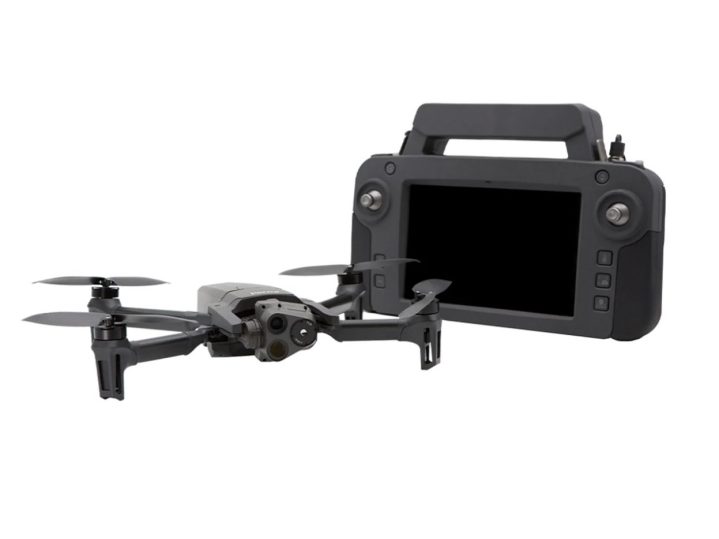For premium consumer grade drones, DJI has been the manufacturer of choice for quite some time. If you like competition or just want a change of pace, that’s not necessarily great for you. Here, we want to look at DJI’s top competitors, their best drones, and what goes into making a good drone. At the end of the day, you may very well want to go with a DJI after all, but it is good to see the competition in full.
One of the main gripes with DJI is the price of their drones. Here, we’re going after premium brands that compete toe-to-to with DJI’s supremacy, so expect similar pricing. If you’re looking for a premium drone on the cheap that’s not going to be the easiest thing to find. Instead, in this case, we recommend you check out our collection of drone deals. Also, in case you missed it, our DJI Mini 3 review just might convert you to a DJI drone on the cheap before you review the best DJI drone alternatives we were able to find.
The best DJI drone alternatives in 2024
- Buy the if you want a drone with 32X zoom and thermal imaging.
- Buy the for a 6K camera and delightful tracking.
- Buy the for a commercial hexacopter with optimized stability.
Parrot Anafi USA
The best thermal drone

| Pros | Cons |
| Can capture user-define thermal images | Limited assisted controlling |
| Intense zoom | |
| 1 minute case to flight time |
The Parrot Anafi USA is largely defined by its camera, which offers 32X zoom and thermal imaging. As with a lot of things, pictures are worth more than 1,000 words. So, first take a look at the capabilities of the 32X zoom, which Parrot asserts can be used to effectively examine people from up to 1.2 miles away. Here, we look at the specifics of a wiring job on an electrical tower, no climbing required:

Next, take a look at the job the Parrot Anafi does with its thermal zoom. From an altitude of up to 131 feet, it can detect thermal hot spots and relatively cool spots. Applications include detecting people and animals in wooded areas, finding overheated building areas in case of electrical or manufacturing fires, and more. It has various modes, including relative temperature coloration, ‘Spot Mode’ which colors only the hottest and coolest parts of an image, and ‘Thermal Analyzer Mode’. This last mode analyzes and highlights selected temperature ranges within a selected area of your capture image. The results have to be seen to be believed:

To get an idea of what flying the Parrot Anafi USA might be like, check out our Parrot Anafi review. It’s not this model and the technical specs are going to be off. (The review doesn’t make any note of thermal imaging, for example.) This being said, you’d be grossly mistaken if you didn’t see the similarities in the build. This means that you should expect a durable drone with a lightweight build. Please note that the software aspect of Parrot drones is constantly evolving, as you can see in the notes within the Piloting, control, and autonomy section.
| Key Specifications | |
| Size | 252 x 104 x 84mm |
| Camera | 32x zoom + thermal imaging |
| Weather resistance | IP53 |
Autel Robotics EVO II Pro
The best 6K drone

| Pros | Cons |
| Travels up to 44 mph | Very expensive |
| 6K/30fps cam with night vision | |
| 9 mile transmission range | |
| Moddable with accessories |
The Autel Robotics EVO II Pro is the drone to get if you want gorgeous shots of your environment, action scenes, or more. It produces 6K imagery via a 20MP 1-inch CMOS sensor, and has an adjustable aperture rang of f2.8 to f11. It can deftly track objects (such as you on your bicycle or car going down country roads) with its object tracking system — capable of keeping tabs on up to 64 objects at once — and 44 MPH max speed. Even through difficult terrain, its 19 sensor groups dodge obstacles and keep on track. Its capabilities can increase or decrease as you add accessories.
Pricing is going to vary upon what bundle you get, what sales are available, and more. The truth of the matter is, though, that you should expect to shell out quite a bit of cash when you grab the Autel Robotics EVO II Pro (or any good drone, especially the best DJI alternatives). For a typical US household, this should be considered an investment, costing somewhat under the typical monthly income. We hate to harp on this, but if there is a con to a 6K drone that can fly for nearly 45 minutes, trailing behind your bike or car, then it would be the price. No doubt, this was predictable.
| Key Specifications | |
| Size | 506 x 620 x 111mm |
| Camera | 6K camera; 3X lossless, 16X digital zoom |
| Weather resistance | IP43 |
Yuneec H520E
The best hexacopter design

| Pros | Cons |
| Highly stable six wing design | Android only mobile app |
| Great fail safe systems | |
| Direct data transfer | |
| Team mode |
Most modern drones are quad-bladed beasts, though there are options with six blades, a configuration that makes what is known as a ‘hexacopter’. Ardent DJI enthusiasts would know of the , which supports this configuration. For those looking for the best DJI drone alternatives, however, Yuneec has a truly awesome hexacopter too, with its H520E design.
This drone has high stability and has fail safe systems in place should a rotor malfunction. And that’s not the only kind of safety provided by the Yuneec H520E. One consistent qualm we see about DJI drones are their reliance on Chinese infrastructure (DJI is shorthand for “Da Jiang”) for data processing. While Yuneec, too, are made in China, all data captured on the machine is directly transferred to your systems with no middleman server, US or foreign. If you trust Yuneec, you’re in the company of the Ford Motor Company and Hamburg’s firefighters. Furthermore, we love the Yuneec H520E’s capabilities as a remote camera. One mode will have it circling you, giving you a chance to see your hobbies being done from all angles. Another interesting feature is ‘Team Mode’ which decouples flight control from camera control. Think of it as a co-op game, with one person managing flight and the other getting the best shot possible in the environment. This allows for complex maneuvers and shots to be taken without overtaxing the pilot or photographer.
Note that we’ve highlighted more about the flight capabilities and camera controls of this drone than the picture quality. That’s by design. The Yuneec H520E works with Yuneec payloads (attachable camera + gimbal structures) that can be purchased separately. The sky is the limit, as they say, but you can find that’s compatible with the H520E if you search hard enough and have the cash on hand.
| Key Specifications | |
| Size | 551 x 482 x 309mm |
| Camera | Modular (not included) |
| Weather resistance | Not IP rated |
How we chose these DJI drone alternatives
Drones are quite different in build and construction. For these drones, we started by finding reputable manufacturers, as that is one thing that DJI has a lock on — being one of the favored drone manufacturers at the moment and for many years. To put it into perspective, when we reviewed the Skydio 2 back in 2019, our reviewer considered in the only non-DJI drone they would consider purchasing. While we’ve lost Skydio (they no longer sell commercially) in the past five years, we have gained other premium drones and drone producers. Additionally, there were some things we looked at again and again when searching for these drones.
Governmental restrictions
Drones are surprisingly political. DJI, which stands for “Da Jiang,” is a China-based company. In a world where many products are bought from China or made in China — think of the best iPhones — this wouldn’t seem like an issue. However, due to information concerns, in the past few years we’ve seen DJI added to blacklists and the company raising prices over international squabbles. Furthermore, the American Security Drone Act of 2023 “bans the procurement or use by the federal government of unmanned aircraft systems (UAS) that are manufactured or assembled by certain foreign entities, including entities subject to influence or control by China, with exceptions.” This has led many consumers to fear that DJI products may soon lose support in the US or that they may face some repercussions for continuing to use them.
As a result, we’ve taken care to find at least one non-Chinese brand, should this be your reasoning for looking for a DJI drone alternative. Parrot, for example, is made in France and has strong US ties. While Autel and Yuneec are China-based, the former has a strong US presence for marketing and the later has data systems that should avoid this issue altogether. Generally speaking, one should buy good tech from good tech makers, though the current politicization of drones is a special case.
Drone size
Drone size will determine, to some degree, where you can fly and carry your drone. The DJI Mini 2 is an impressively small 138 x 81 x 58mm, though most drones will get much bigger. If you’re looking to do aerial photography with your drone, you may actually want a bigger drone that can tolerate larger lenses. In most cases, large drones are equally as good at maneuvering as small drones once you get above the tree line.
Camera
We’ve gone into detail on getting beginning to shoot aerial photos with drones in the past, but you won’t be able to get a good shot — no matter your skill level — without a good camera. On today’s drones, you should expect to get anywhere from 6X to 30X optical zoom, and can shoot up to 6K quality imagery. You may also find yourself with advanced sensors that can produce thermal imaging as well.
IP rating
For tech writers, the IP (or ‘Ingress Protection’) rating of an object is an everyday sort of rating. For consumers, not so much. IP ratings look like IP45 or, as is the case with sweatproof earbuds, IPx7. To simplify highly, after the “IP” you’ll see a number or an X, with higher numbers meaning better protection and an ‘X’ signifying that the aspect was not tested. The first number denotes dust protection and the second water/liquid protection. We believe that IP43, which protects against dust as small as 1mm in diameter and against spraying water should be enough for most drones. Consult our IP ratings guide for more precise assistance.
Note: Not all products will have an IP rating. This is totally fine and does not mean that they will fall apart in the face of a small amount of dust or water droplets. Rather, it means that the company has not bothered to get the product tested via the IP rating system, which is a third party system and not required of a manufacturer. Put simply, getting your product IP rated is your choice, not mandatory.
This article is managed and created separately from the Digital Trends Editorial team.



